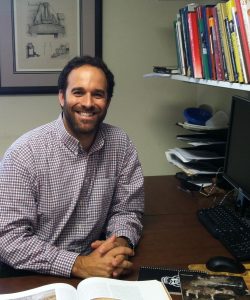Anthropology Grad Student, Josh Driscoll, Makes Beer from Ancient Recipe in new UWM Report video
Watch the video below! https://uwm.edu/news/video/anthropologist-brews-iron-age-beer/
Watch the video below! https://uwm.edu/news/video/anthropologist-brews-iron-age-beer/
UWM Sabin Hall G90
3413 N. Downer Ave
Milwaukee, WI 53211
Join us for our next UWM Anthropology Colloquium!
“Costs and Benefits of Cooperative Breeding in Saddleback Tamarins” (Leontocebus weddelli)
Professor Leila Porter
Department of Anthropology, Northern Illinois University
Sabin G-90
3:30 Friday March 9, 2018
Professor Porter is a biological anthropologist who studies primate behavior and ecology. Her research focuses on South American monkeys, particularly small-bodied tamarins, marmosets, and callimicos. She has studied diet, habitat use, and parental care, and the evolution of social behavior among primates. Professor Porter participates in on-going field research and conservation efforts in the tropics of Bolivia.
Interested in having dinner with Dr. Porter afterwards? RSVP to Paul Brodwin (brodwin@uwm.edu).
UWM Sabin Hall G90
3413 N. Downer Ave
Milwaukee, WI 53211
Dr. Adam Rabinowitz, Indiana University
Sabin Hall Room G90, 3413 N. Downer Ave., UW-Milwaukee Campus
March 4, 2018, 3:00pm
Description: For more than three thousand years, the Crimean peninsula has been a meeting point for different worlds: the nomadic world of the great Central Asian steppe, the trade routes leading over land from the Middle East and Anatolia, and the interconnected maritime environment of the Mediterranean. These diverse currents were particularly entangled during the Iron Age, when the local population – known to the Greeks as the bloodthirsty Taurians – met, on the steppe side, Scythian horsemen, and on the sea side, Greek sailors establishing cities and trading posts along the coast. And these Greeks and Scythians met each other, too, eventually forming hybrid societies like the Bosporan Kingdom in eastern Crimea.
This talk will discuss the demographic and cultural transformations that took place in Crimea between the 7 th and the 4 th centuries BC, transformations that saw some of the most spectacular works of Greek metalsmiths deposited in the kurgan burials of Scythian princes. I will focus on the effects of culture contact on these diverse societies, with a particular focus on the western side of the peninsula, where, as part of UT’s Institute of Classical Archaeology, I carried out fieldwork and heritage management at the Greek city of Chersonesos between 2002 and 2011. I will also explore some of the more recent cultural interactions in Crimea, which finds itself once again contested between cultural forces both opposed to and deeply entangled with each other.

Adam Rabinowitz is Associate Professor in the Department of Classics at the University of Texas, and also Assistant Director of the Institute of Classical Archaeology there. His research interests are Greek colonization, cultural interaction, ancient food and drink, archaeology of daily life, and digital approaches to archaeology. He is a field archaeologist with twenty-five years of archaeological field experience at Greek, Roman, and Byzantine sites in Italy, England, Israel, Tunisia, and Ukraine, and has published extensively. Professor Rabinowitz is also involved in several digital humanities projects related to the linking and visualization of information about the Classical past, including Pleiades, GeoDia, Hestia 2, and PeriodO.
Read the poster for more information.
UWM Mitchell Hall, Room 158
3203 N Downer Ave
Milwaukee, WI 53211
Joint Colloquium UWM Departments of Anthropology and Art History
Adam Rabinowitz
Associate Professor of Classics & Assistant Director of the Institute of Classical Archaeology University of Texas-Austin
Friday, March 2, 2018
3:30 pm – 5:00 pm
Mitchell Hall, Rm 158
“Planet Texas 2050” is the first theme of the UT-Austin Bridging Barriers grand challenge initiative. In this project, research teams will use interdisciplinary research into past societies to advance a larger research effort focused on building resiliency to the rapid urbanization and extreme weather in Texas. This talk explores how to integrate digital data from a variety of heterogeneous — and sometimes incommensurate – sources in the context of interdisciplinary research.
Professor Rabinowitz studies Greek colonization, cultural interaction, ancient food and drink, archaeology of daily life, and digital approaches to archaeology. He has also several digital humanities projects about the Classical past funded by the National Endowment for the Humanities and the Institute of Museum and Library Services.
Sabin Hall G90
3413 N Downer Ave
Milwaukee, WI 53211
Dr. Richard W. Edwards, Ph.D., RPA
February 19, 2018, 7:00 pm
Sabin Hall G90
Late Prehistoric of the Great Lakes region was a time of significant cultural and environmental shifts. The relatively sudden arrival of Middle and Upper Mississippian material culture in the archaeological record is associated with cooling temperatures, fluctuating rainfall, aggregated populations, and a significant reliance on agricultural foods.These changes brought new challenges, particularly associated with food security. The research presented here explores the ways that these risks were mitigated in the Koshkonong Locality of southeastern Wisconsin, and how these strategies affected daily life and both inter and intragroup politics. A combination of paleoethnobotany, zooarchaeological isotopes (canine surrogacy approach), and landscape analyses were used to interpret Koshkonong risk management systems.
UWM Sabin Hall G90
3413 N Downer Ave
Milwaukee, WI 53211
Dr. Nicholas Blackwell, Indiana University
Sabin Hall Room G90, 3413 N. Downer Ave., UW-Milwaukee Campus
February 11, 2018, 3:00pm
Description: This presentation highlights the technology and tool types that masons and sculptors employed at Mycenae to produce some of the most well-known monuments in the Aegean Bronze Age. Analysis of preserved tool marks on the Lion Gate relief, Treasury of Atreus, and the Tomb of Klytemnestra reveal phases of construction, specific artisan choices, and variable stone-cutting techniques. My analysis of Mycenaean tool patterns reveals that palatial centers managed metal resources at the end of the Bronze Age, including finished products like tools. A natural question stemming from this observation is whether or not masons at Mycenae experienced some autonomy. Or did the state micromanage them and their projects—as the disbursement of work implements might imply?
Read the poster for more information.

Nicholas Blackwell is the Schrader Visiting Assistant Professor in the Department of Classical Studies at Indiana University, Bloomington. With a Ph.D. from Bryn Mawr College, he has been a research fellow at the W.F. Albright Institute of Archaeological Research in Jerusalem, the Assistant Director of the American School of Classical Studies at Athens (ASCSA), and a Postdoctoral Teaching Scholar in the Department of History at NC State University.
His research addresses the archaeology and material culture of Greece and Cyprus, particularly during the Bronze and Early Iron Ages. Dr. Blackwell’s doctoral and postdoctoral focus on metal tools, technology, craftsmanship, stone-cutting techniques, and metallurgy highlight his desire to better understand intercultural relations and connections across the Aegean, eastern Mediterranean and Near East during the latter half of the second millennium BC. Dr. Blackwell’s articles and book reviews have appeared in Antiquity, the American Journal of Archaeology, the Journal of Mediterranean Archaeology, the Journal of Near Eastern Studies, and the Bryn Mawr Classical Review. He is currently working on a book project entitled: Before Daedalus: Tools and Elite Stone Working in the Mycenaean World.